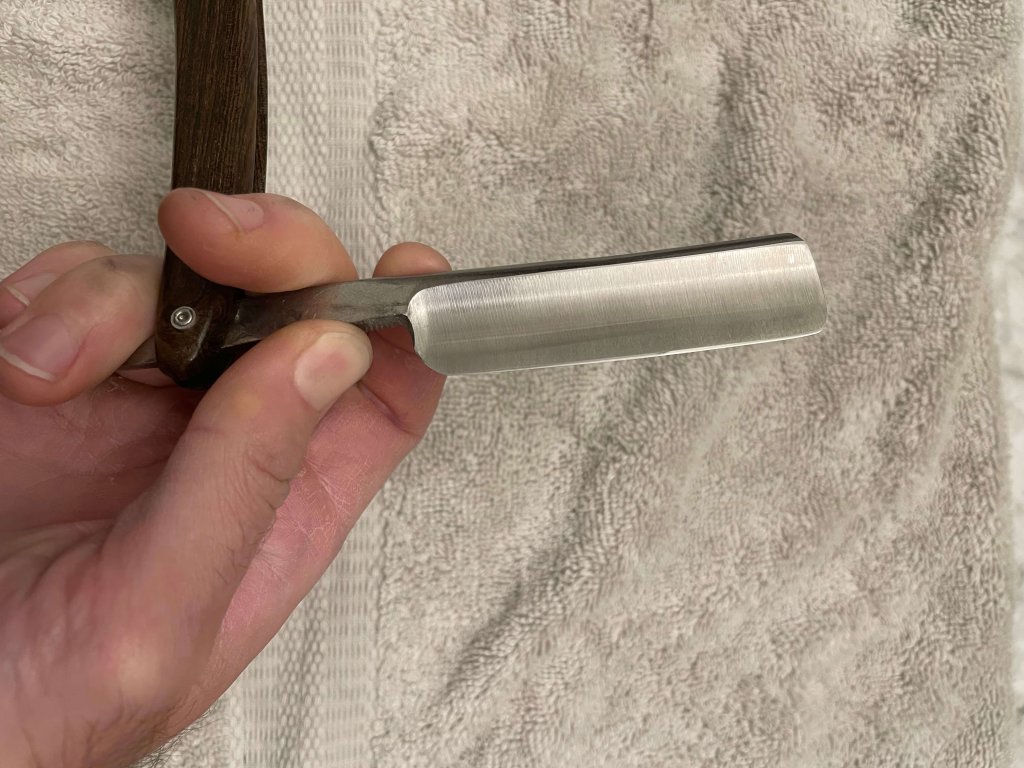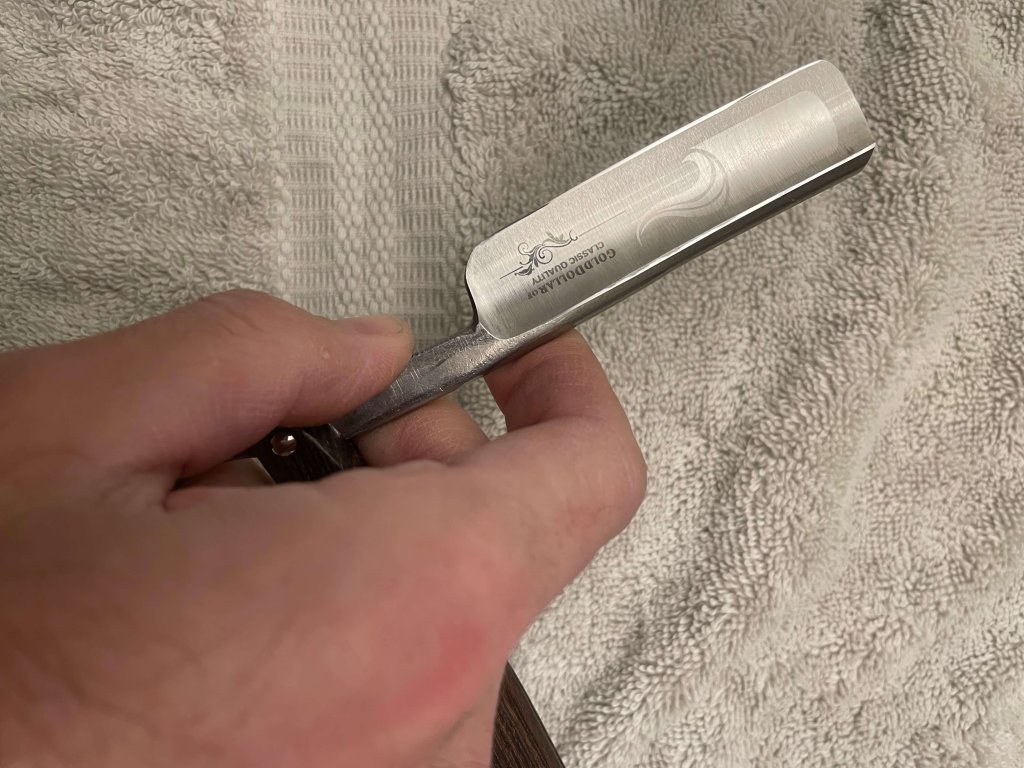
“If you teach a poor young man to shave himself, and keep his razor in order, you may contribute more to the happiness of his life than in giving him a thousand guineas.” ~Benjamin Franklin
A little over a year ago I wrote a holistic defense of shaving with a straight razor, but I think there might have been a few things I missed, not to mention I wanted to be a little more succinct this go-round.
Well, if you want the full dissertation on shaving with a straight razor, please see that previous post. If you just want a few quick, digestible reasons that shaving with a straight razor is better than a safety razor (and any other type of razor for that matter) then read on.
It Affords a Closer Shave
Yes, you read that right. Shaving with a straight razor actually affords a better, closer shave than you’ll get with a safety razor.
Also, it offers a better shave than with a cartridge razor, but not because it shaves closer. In fact, a straight razor will produce a shallower shave than you’d get with a cartridge razor with umpteen blades.
But that is a good thing and a selling point. The multiple redundant blades of cartridge razors are actually capable of shaving the hair off below the level of the skin, and that’s where ingrown hairs come from.
So, yeah, a straight razor gives you as close a shave as you need.
It Costs Less
A good straight razor will cost you $100 or a couple hundred, and even some Gold Dollar razors are shave-ready and cost a small fraction of that.
Good safety razors are comparable in price and blades are not cheap. As for cartridge razors, forget it. I don’t care if you can get the razor body for $4 if the heads cost $13 each. I’ll pass. I paid for each of my straight razors exactly once and I will have them for life.
It’s More Sustainable and Less Wasteful
I never thought I’d be making this exact argument, but here I am. For anyone that’s concerned about sustainability, please don’t be throwing your used razors away. I mean seriously, that’s borderline noxious medical waste. And you willingly produce it and throw it away? My straight razors are not contaminating any landfills waiting for the unfortunate to hazard upon them.
Also, it’s just generally not wasteful to use a straight razor. Even though I’m not hung up on sustainability like a junkie, I am a person that can’t stand to waste things. Straight razors produce none.
Straight Razors Last Longer
A lifetime, to be precise. How many shaves do you get from your cartridge razors before you need to throw the head away and get a new one?
Even my safety razors are better than that. When the space between the blade and housing gets occluded by shaving cream and hair, I loosen the housing, rinse it out, and I’m fresh. I’ve even learned you can strop a safety razor (installed, that is) extending the lifespan. That doesn’t work with a cartridge razor because it’s effectively impossible to clean the blades. They are set too close together and cannot be removed, so when they get gummed up, and you can’t rinse them out to your satisfaction, it’s lights out.
As for a straight razor, they last as long as you have the gall to take care of them.
It’s Less Likely to Cut You (Seriously)
I find this is the claim that raises the most eyebrows, but I pass this as gospel, it is true. Once you learn how to handle a straight razor you are exceptionally unlikely to cut yourself.
Can it happen? Yes, and you can cut yourself badly. But it won’t so long as you are careful.
The reason that straight razors are (ironically) safer has to do with the fact that you can change the angle at which the blade contacts your skin. Being able to adjust this results in less tension between the hair and the blade, creating less friction and a lower chance of slipping and cutting yourself.
It’s nearly impossible for me to get a good shave on my neck with a cartridge razor or even a safety razor for this very reason, but I have no (and have never had any) problem with a straight razor, even in sensitive areas.
It’s More Enjoyable to Use
This is just one of those things about which you will have to trust me until you can try it for yourself. I suppose I could be in error here and you will hate it, but I am willing to take that chance.
It’s Cooler
Another item you’ll have to take on faith. Or perhaps not. You shouldn’t need too much convincing that it’s way cooler to shave with a straight razor, which is a bonafide blade, than a safety razor, which is a toy.
WTG, XTG, ATG: WTF?
I was in a shaving forum the other day when I actually got the idea to rehash the topics covered in this article when I saw a post that included the three former acronyms above, and I had no idea what they were.
I’ve been shaving with a straight razor for 6 years and still didn’t know the acronyms, so for your benefit, here they are (you’ll understand what they mean when I spell them out):
WTG (With the Grain): When you are shaving with the grain, you are drawing the razor in the direction that the hair naturally lays. With a sharp razor, a steady hand, and the proper angle, shaving with the grain is the easiest and safest as it is less likely to cut you. When you first start shaving with a straight razor, you should only be attempting to shave with the grain. You won’t be able to get as close a shave as going across or against it, but while you’re learning, it’s best to play it safe.
XTG (Across the Grain): When you shave across the grain, you will be drawing the edge of the blade across (perpendicular) to the orientation of your hair’s growth pattern. This is slightly riskier than WTG shaving. It produces a slightly higher risk of cutting yourself, but you’ll also get a closer shave. Do not attempt shaving XTG until you are comfortable with WTG shaving.
ATG (Against the Grain): When you shave against the grain, you are drawing the edge of the razor in the direction opposite that in which the hair naturally grows/lays. ATG shaving is by far the riskiest method and should not be attempted until you are very comfortable shaving with a straight razor because the risk of cutting yourself is very real. Never force the razor; if you need to force it, the razor needs to be honed or stropped, and you run a serious risk of slipping in which case you could give yourself quite a bad laceration. Anyway, once you get comfortable with WTG and ATG shaving, and are ready to try ATG shaving, the risk may prove worth the reward: ATG shaving gives the closest, smoothest shave possible.
What You Need to Know to Be Successful
Lastly, I’d like to close with a few things I think you need to know in order to be successful with a straight razor in hand.
You Must Prepare Your Beard
By this, I mean, you need either to shave right when you get out of a (hot) shower, or you need to make an intentional effort to soften your beard with a hot towel, in accordance with the old fashion.
I cannot stress this enough. You cannot shave dry with a straight razor. If you do you are going to slip and more than likely to give yourself a serious gash on the face or neck.
And, if that weren’t deterrent enough, I cannot state how painful it is to shave without preparing your beard first. It is a special type of pain that I do not suggest you willingly experience.
You Must Learn to Strop the Razor

One of the great things about straight razors is that they last forever with proper care. It is (slightly) unfortunate, however, that you also need to learn to strop the razor.
I won’t belabor the point here – I break down what stropping is completely and how to do it in a previous post, where you can learn all about it.

And you will need to learn all about it, because no matter how sharp your razor is before your first shave, you will only get a few shaves out of it before the edge needs to be realigned with a good stropping.
You Should Learn to Hone the Razor

While you do need to learn how to strop your razor, as well as how to soften your beard before shaving, I think you might be able to get away without learning how to hone the razor.
I don’t think you should, though. I mean, I do think you should learn how to hone the razor. After a while, no matter how judicious you are with stropping, you will eventually need to restore the edge.
And for that you need a whole hell of a lot of patience and a very, very fine stone. I mean, 12000 to 30000 grit.
I use a Chinese natural stone that I got from an online woodworking shop and it does a decent job of bringing back the edges on my razors. We call this a CNat in the “shaving world,” if you will. Japanese natural stones, or JNats, are also good.
So are synthetic stones, but again, make sure you get one 12000 grit or higher. Anything lower will ruin your edge, perhaps irrecoverably.
You Must Learn How to Hold the Razor

You also need to learn how to hold the razor. I recommend an angle of about 30° if not a little shallower. Any higher (or if you go too shallow) and you will not only not get a close shave, but you will cut your face.
This is something, however, with which you will enjoy a slightly higher degree of liberty. Experiment with it a bit and try to find the angle that works for you. You’ll probably want a slightly higher angle when shaving with and across the grain and a slightly lower angle shaving against it, but all beards are unique and that’s something you’ll need to determine for yourself.

Other Than That, I Think I Covered My Bases
Let’s just put it this way. I don’t believe there’s anything out there that could convince me to go back to shaving with a cartridge razor. I couldn’t even be convinced to lapse to my old habit of safety razor shaving, at least not routinely.
So give a straight razor a try and you’ll see that everything I’ve published this far is true.